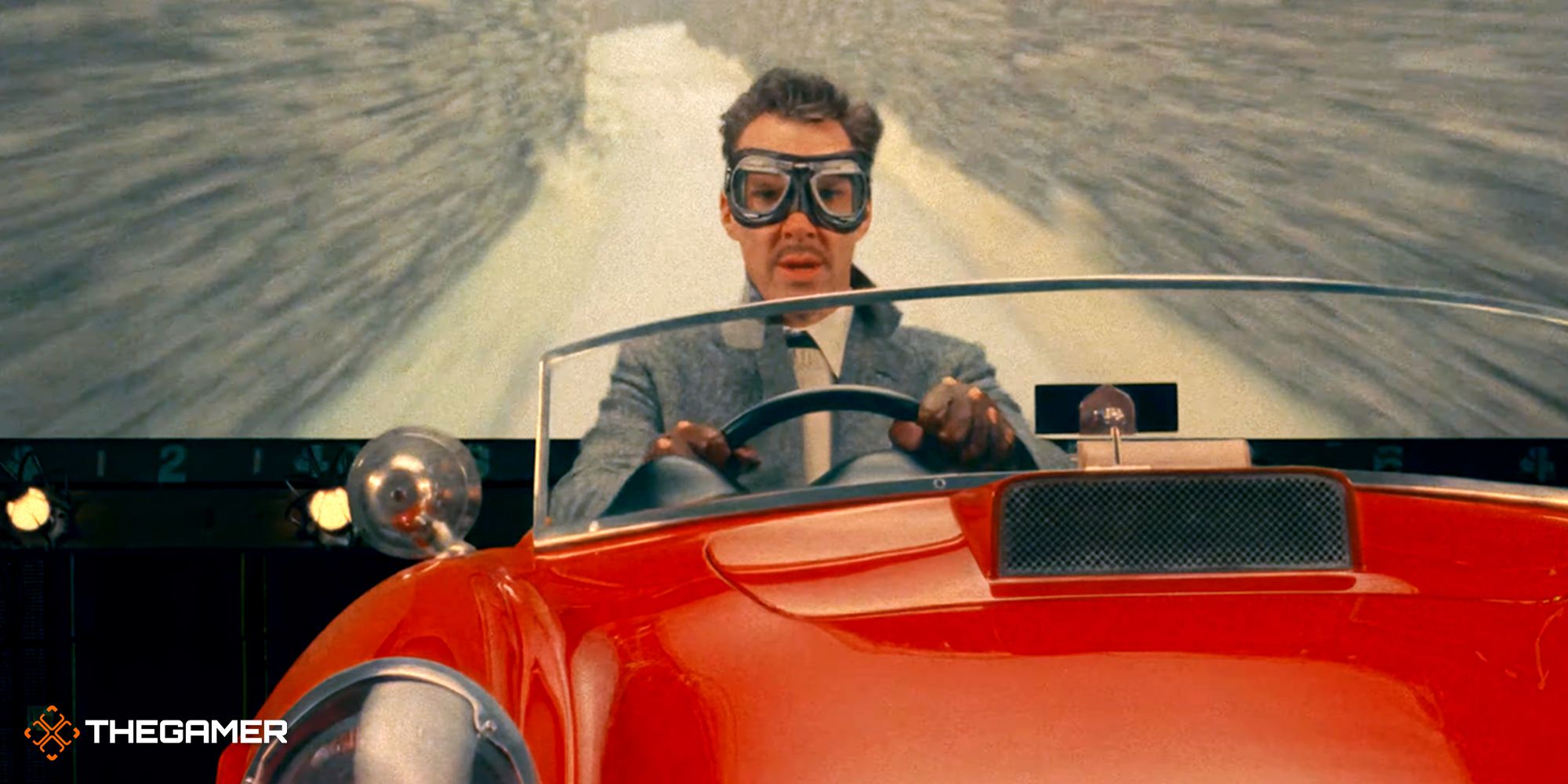The Wonderful Story Of Henry Sugar Is Unlike Anything Wes Anderson (Or Anyone Else) Has Ever Made

This article contains spoilers for The Wonderful Story of Henry Sugar. It’s only 39 minutes long, so I encourage you to go watch it before reading this.
The Wonderful Story of Henry Sugar will almost certainly receive the usual critique that “it’s the most Wes Anderson movie Wes Anderson has made yet.” I’ve written before about being annoyed by the laziness of discussing his work that way, but if you’re looking for Anderson’s tics, you’ll find many of them here. There’s the frame narrative, the direct to camera address, the obviously artificial sets, the symmetrical shot compositions, and the pastel colors.
But focusing on those familiar trappings is a good way to miss how fresh Henry Sugar is. It may look like Wes Anderson, but it feels unlike anything I’ve ever seen before.
RELATED: PSA: There Are Four New Wes Anderson Films Out This Week
That’s because the story of Henry Sugar is told in a wonderfully strange way, eschewing many of the conventions we associate with literary adaptations, or even film in general. The short begins with Roald Dahl (played by Ralph Fiennes) setting up the story from his writing nook, before the narration switches to Henry Sugar himself (Benedict Cumberbatch), who picks up the thread without missing a beat, narrating his actions with Dahl’s words from the original story. When Sugar finds a book by a doctor named Z.Z. Chatterjee (Dev Patel) on the topic of a man who could see without using his eyes, we go another layer deeper down the rabbit hole, traveling to Chatterjee’s practice in India. Patel picks up the narration in his story within a story, telling the tale of the day he met the man in question, Imdad Khan (Ben Kingsley), who uses his talent to make a living as a performer. Khan learned this ability by seeking out a guru deep in the jungle who had mastered the ability to levitate above the ground.
Via Netflix.The trade off from narrator to narrator means that you hear the entirety of Dahl’s story (or, at least, it seems like the entire story, there may be small cuts) over the course of the short. It’s an unusual approach to adaptation — if you just had Henry Sugar playing in the background as you did chores, it would function as an extremely well-produced audiobook. But, the obvious artificiality of Dev Patel’s character saying, “I said,” after he says something perfectly matches the artificiality of the aesthetic Anderson has cultivated here. The sequence during which Khan delves into the jungle is the film’s best showcase for that aesthetic and highlights what makes it feel so fresh. The flora is gorgeously painted on wooden panels that part as he moves further into the wilderness. Eventually, he reaches the clearing where the swami and his helper’s stone hut stand, and the scene is framed by the lush leaves and colorful flowers that remain around the screen. No one would mistake this for the real jungle — it’s obviously been created by production designers — but it evokes a sense of wonder that location photography or ultra-realistic CGI could not.
Then there’s the moment when Sugar imagines death by blood clot, and pulls an X-ray machine in front of his body, revealing the stop-motion cardiovascular system pumping away beneath. Or the moment when Khan tells the story of his journey to find the swami and a model train crosses the screen above his head. These things are expressionistic, not realistic, and make for beautiful and strange images as a result.
Critics have often said that Anderson should scale back his quirks, and that his obsessions hold him back from greatness or broader commerciality. But Henry Sugar makes the opposite point. This is something that could only have emerged from Anderson’s years-long pursuit of his interests. Henry Sugar makes the argument that there’s no such thing as too much of an artist’s self.
NEXT: In Asteroid City, Grief Is A Crater













